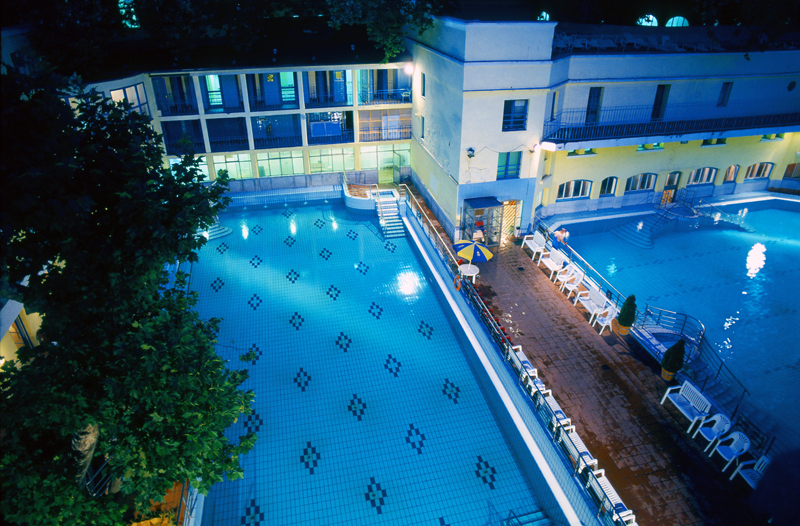Hundreds of articles have been written about the ancient thermal waters of Budapest, many amazing photos were taken at these places, but there is much more to them than their beauty. For instance, the hippos too are splashing in the waters of Széchenyi Bath.
Termálfürdő.hu has collected seven of the most exciting stories about the baths of Budapest that you might not want to miss. Let us dive deep into history.
1 Lukács Bath was built in the 12th century by the Saint John knighthood when they were stationed in Hungary, curing people. During the Ottoman invasion, Mustafa Pasha had the bath expanded in the 16th century, using the water not only for bathing but also for manufacturing gunpowder and for operating a mill.

photo: http://en.lukacsfurdo.hu/
2 The waters of the Lukács Bath were used for another purpose too: the water for the authentic Turkish Király Bath is supplied by the Lukács waters, ever since it was built in 1565. Király Bath, located inside the castle walls, was not built near a spring, so the Turks had made a water-conduit connecting Lukács Bath with the castle, despite the energy and money it cost. This endeavour goes to show how much the Turks loved bathing – they were not willing to give up this relaxing activity just because of a siege.

Photo: kiralyfurdo.hu
3 If you are looking for a thermal adventure, head to the Széchenyi Thermal Baths, where you can soak yourself in beer. Well, not quite literally, as the thermal water is infused with hop, malt and yeast, the main ingredients that you would need to brew beer. Even though this is a new trend in Hungary, the custom of beer-bathing goes back centuries in other parts of the world.

4 Termálfürdő.hu argues that even though the Római Beach is rarely listed among the historical baths of Budapest, its waters were commonly used already back in the 15th-16th centuries. Moreover, it is not a mere coincidence that it was named after the Romans: in the 2nd century, the Romans had built a bath on the Danube bank, where the Római Beach is located today. The region surrounding the spring was considered a sacred place and even a shrine was built here, archaeologists found the remains of which.
5 Who would have thought that the elegant and refined Gellért Baths, considered to be Europe’s most modern bath in the 19th century, was actually referred to as “Muddy Bath” up until the 18th century? This was so because of the mineral mud that settled at the bottom of the pools. There were instructions on how to take a bath in these waters: you would have to sit in it until your skin turned red, after which you would have to rest on the shore until the redness went away.

6 If you go to the Széchenyi Thermal Bath, you will not only have taken a bath with Michael Palin from the Monty Python group, or Madonna but also with the hippos inhabiting the Budapest Zoo in the vicinity. The artesian water has a beneficial effect on these beautiful creatures, as its composition is quite close to that of the Nile’s waters. The zoo management thus decided to fill the hippo basin with thermal water, in which the hippos are literally thriving: most of the hippos in European zoos have Hungarian roots, as the Budapest Zoo hippos are breeding at a record rate.

7 Last but not least, the Budapest baths are world-famous film stars, but you might already know this. If you know them well enough, you might have spotted the Gellért Bath in I Spy (2002), starring Owen Wilson and Eddie Murphy (though the Széchenyi Chain Bridge and the Parliament are featured too) and in Evita (1996), starring Madonna, the Rudas Bath in the 2011 TV-series The Borgias, starring Jeremy Irons, when this Budapest bath stands in for a Neapolitan bath.

Photo: http://en.rudasfurdo.hu/galleries/rudas-thermal-baths-8
featured image: www.gellertfurdo.hu